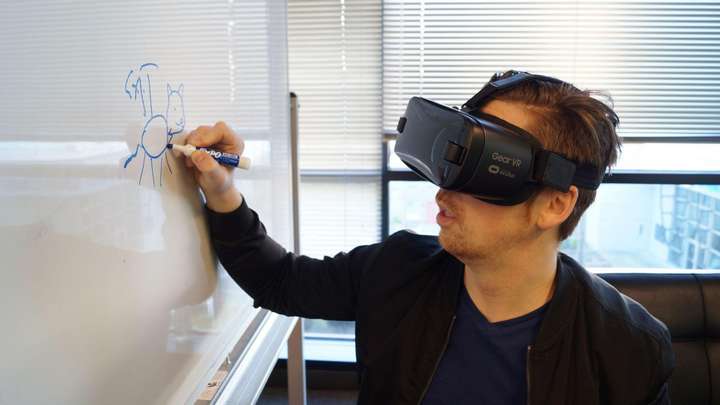Wondering what amazing technology is there to help blind and visually impaired people see better? This article explores some of these 21st-century feats…
Nearly two million people in the UK live with a form of vision impairment, with 360,000 of these people registered as partially sighted or blind. Vision loss can be devastating and results in thousands of eye injury compensation claims every year.
Thanks to new and emerging technology, there is a light at the end of the tunnel for those affected by sight loss. In this article, we’ll take a look at the unique technology that’s helping people to see again…
Technology for the Blind and Visually Impaired
Life through a lens
Professors from many universities, including Netherlands-based professor of visual neuroscience Richard van Wezel, are currently working on a brain implant that replaces the eyes with a camera. This innovative technology works by translating camera images into tiny electric shocks that stimulate cells within the visual cortex.
So, how’s it done? Up to 100 electrodes are inserted into the brain’s visual cortex, and these electrodes then create numerous points of light that allow visually impaired people to discern shapes.
While this won’t produce ‘normal’ vision, it can enable blind people to gain more independence. Richard van Wezel explains, ‘a neural network filters the most relevant visual information in advance. This makes it possible to navigate your way around and see the difference between a sidewalk and a road’.
One test subject in Spain has, so far, received the implant and, the research continues as we speak. Richard van Wezel is also working on a belt to identify facial expressions and other subtle body language signals.
Fancy footwear
Austrian-based Tec-Innovation has created the first smart shoe for blind people. The shoes, given the brand name Innomake, features some smart tech that can alert the wearer to obstacles and hazards while out and about. This can help them avoid accidents during day-to-day activities.
The innovative footwear is fitted with devices which include:
- Distance sensors to simulate spatial awareness
- Foot movement sensors
- Vibration units
- Ultra-bright LED lighting for night-time use
- Processing unit
- Built in waterproof and dust-proof battery
The waterproof and dust-resistant shoes connect wirelessly to a smartphone and can alert the wearer to obstacles up to four meters in front of them. When an obstacle is detected, the device uses vibration, acoustic (via bone conduction earphones), and visual signals to warn the wearer of the potential hazard.
The rechargeable shoes feature a battery that lasts around seven days, and the InnoMake team is currently developing the device to include a camera. While this is undoubtedly a significant development, fashionistas will be disappointed to learn that styles and models may be limited.
Putting the eye into AI
The clever folk at OrCam, led by Professor Amnon Shashua and Mr. Ziv Aviram, launched the MyEye 2.0 in 2017. This revolutionary device is designed to clip onto a wearer’s spectacles to assist vision quickly.
The device, which retails for £2,988, uses the power of artificial intelligence to recognize faces and facial expressions, identify items and products, and also recognize colors. The My Eye 2.0 also features interactive reading and orientation assistance for the visually impaired.
This advanced technology can effectively read facial expressions to allow the user to ‘see’ if people are paying attention to them. It also allows the wearer to read body language signals which would otherwise be unavailable to them.
Talk the walk
WeWalk is a supercharged new take on the traditional white cane for the blind and visually impaired. Fitted with a touchpad and speaker, the WeWalk smart cane uses ultrasound to detect chest-level obstacles like branches, poles, and traffic signs. It also alerts the user to the hazard by connecting to their Smartphone.
As well as helping to avoid obstacles, WeWalk’s many features include connectivity to public transport. This allows the visually impaired to manage their transportation by accessing bus and train information.
A game changer for the visually impaired
IrisVision uses virtual reality to simulate sight, taking its inspiration from gaming technology. This device connects a VR headset to a Smartphone to capture footage of the user’s surroundings and th/en transmit images to each eye. The user can then zoom in and out through the magnifying lenses to see more clearly.
The IrisVision is a handy tool for those with limited vision and can allow the user to read content, including essential information such as guidance on medicine bottles. The IrisVision is currently available to buy and retails for around £2,219.
The development team is currently working on a more mobile device that will give the user the same benefits while out and about, as the current model, while effective, is a little bulky.
Technology Provides a Vision for the Future of the Blind
When we think about innovations such as artificial intelligence and virtual reality, we often think about entertainment and leisure. This technology is also being widely used in the medical, surgical, and pharmaceutical industries.
As technology, such as the examples covered in this article, continues to develop, the hope is that life-changing conditions, such as sight loss, will become a thing of the past.




